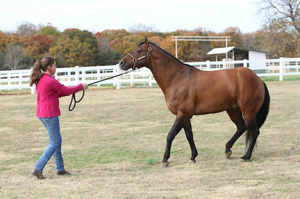In horse training, your approach can make or break you.
Try to force or hurry your horse, and things go south–fast. Take the time to get on his wavelength and make clear what you want, however, and things can go better than you might’ve dreamed possible.
The key, as clinician Pat Parelli says, is to “use your head, not your spurs.”
Well, OK. That make sense. But it can be much subtler than that, too.
Here’s how clinician and author Mark Rashid explains it: “A technique can have a ‘Here, horse, let me help you’ feel behind it. Or it can have a ‘You better do this or else’ feel behind it.”

Ultimately, he concludes, “The feel behind the technique can be the factor that decides whether the technique is effective or not.”
Many top trainers and clinicians over the years have promoted this important concept, each in his or her own way. I especially like how the late Bill Dorrance put it. With Leslie Desmond, he’s the author of True Horsemanship Through Feel. Bill said: “It’s really amazing what a horse will do for you if he understands what you want. And it’s also quite amazing what he’ll do to you if he doesn’t.”
What a horse does “to” you is almost never out of maliciousness. According to the late, great horseman Ray Hunt, a horse is always doing one of just two things: “What he thinks he’s supposed to do, or what he thinks he has to do to survive.”
Your job, then, is to make sure what he thinks he’s supposed to do is indeed what you want him to do. If, instead, you put pressure on him when he doesn’t understand, that’s the recipe for a wreck. (Or at the very least, a balk.)
Being clear with a horse involves both precision and timing. In her book Reining Essentials, world champion trainer and clinician Sandy Collier explains that you must show your horse what you want “until he understands and accepts a maneuver, and only then should you train him on it.”

How do you do this?
“Use your aids in a way that enables your horse to ‘find’ what you want,” says Collier. “Help him figure it out, and give him time to do so, then reward him when he does the right thing.”
In other words, be clear with your cues, and set your horse up so that he’s conveniently positioned to do what you’re asking. For example, you might use an arena wall or corner to shut off one or more directions, then “open the door” to “the right thing” by removing leg pressure in the direction you do want him to go.
Then, give him time to figure it all out.
“You are trying to help the horse use his own mind…to present something and then let him figure out how to get there,” explained the late Tom Dorrance, from whom Sandy learned many of her horse-centric methods. (Tom was the brother of Bill and author of True Unity: Willing Communication Between Horse and Human.
Then, Tom went on, you begin to try to get what you want with less effort. “You cut down what you are applying and get more response with less pressure, until it almost gets to be just a thought.”
When that happens, you’ll know you’ve found the right approach–and are truly on the same wavelength with your horse.






